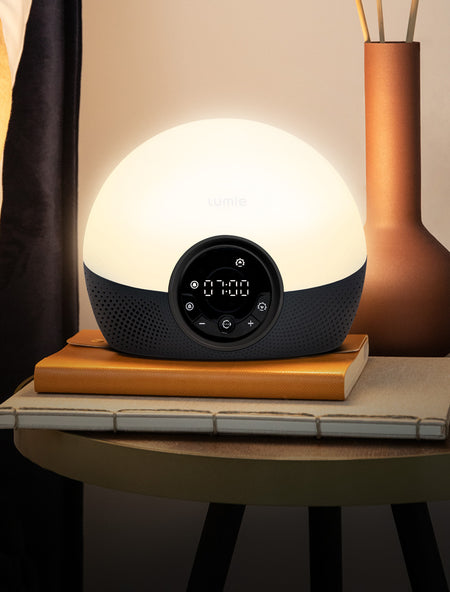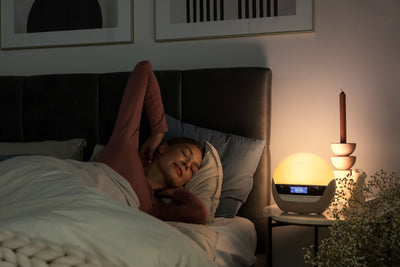What are the warning signs of Seasonal Affective Disorder and what is the best treatment?
Have you noticed a clear seasonal pattern in how you feel? Does your mental health plummet with the start of autumn and winter? You may be suffering from a seasonal mood disorder. While you should expect the ‘black cloud’ to lift in the warmer and brighter months, it is important to recognise the symptoms of seasonal depression and opt for suitable therapeutic solutions as early as possible to treat or even prevent SAD and winter blues.
What is seasonal affective disorder?
The term seasonal affective disorder (SAD) refers to a mood disorder, the onset of which, as well as its remission, occur at roughly the same time each year. Most commonly, seasonal affective disorder is associated with depression which develops in autumn or winter, and eases off in the spring or summer season. It is estimated that around 6% of the UK population is at risk of suffering from SAD, and a further 20% is affected by a milder form of seasonal mood disorder known as the winter blues. As a type of major depressive disorder, seasonal affective disorder can present with a range of symptoms, which, when ignored, can lead to feelings of hopelessness and difficulty coping with everyday activities.
Who’s at the highest risk of developing seasonal affective disorder and why?
SAD is said to be triggered by limited exposure to sunlight, so those living farthest from the equator in northern latitudes are most at risk of developing seasonal affective disorder. It is estimated that winter depression is four times more likely to occur in women than in men, and the age of onset is between 18 and 30 years, which suggests a correlation with the individual starting full-time work.
What are the symptoms of seasonal affective disorder?
Symptoms of winter depression centre around low mood and energy. People with SAD experience:
- Feeling sad
- Irritability
- Frequent crying
- Lack of energy
- The need to sleep more than usual
- Decreased activity
- Lethargy
- Difficulty concentrating
- Increase in craving carbohydrates and sugars
- Weight gain because of overeating
In some instances, symptoms of SAD can be quite severe, so it is important to recognise warning signs as early as possible to prevent acute depression. Dr Norman E. Rosenthal, the psychiatrist who first described SAD, developed a useful tool to help evaluate the severity and seasonality of depressive symptoms. You can access it here.
What is the best treatment for seasonal affective disorder?
There are many proven and natural ways to promote good mental health during gloomier seasons. Good sleep hygiene, and a commitment to a regular sleep/wake cycle, are crucial to keeping your circadian rhythm on track. Light (especially morning light) is the most powerful synchroniser of your internal clock, so long daily walks outside, even on cloudy days, are great at managing winter blues. The light intensity of your regular home or office lighting is very low, and on average falls between 250-500 lux. By comparison, outside you get 1,000-5,000 lux on a cloudy day, and 50,000-100,000 in bright midday sun.
If you are struggling to get outside regularly, or are stuck indoors, bright light therapy is the next best thing. Lumie light therapy lightboxes emit 10,000 lux to replicate the colour and intensity of daylight that is missing from your life. Those who use bright light therapy regularly often see an improvement just after a few days, and most notice a real difference in their mood and sleep within two to four weeks of starting their light therapy protocol.
Other forms of treatments include dawn simulation (more on that below), regular exercise (known to increase serotonin), antidepressants (taken either seasonally or continually), as well as psychotherapy (talking therapy or CBT for example). It is important to consult your doctor on what treatment is best for you.

When and how should I use bright light therapy to alleviate the symptoms of SAD and winter blues?
Lumie bright light therapy lights such as Vitamin L emit 10,000 lux, using a powerful, cool-white or blue-enriched light source, closely mimicking the colour and intensity of daylight. They are energy efficient and UV-free, which means they are convenient and safe to use. For effective treatment, place your lightbox at a comfortable distance, for instance, arm’s length, and keep it switched on for an hour or so. This can be done in one go, or in several short bursts in the first part of your day. If you prefer a shorter treatment time, simply sit closer to the light. Although the light needs to reach your eyes, it can be positioned to one side as there’s no need to stare at it. If you struggle with afternoon sleepiness, you can use your light after lunch too, to increase your energy levels, alertness and performance in the second part of your day.
Use your lightbox daily throughout autumn and winter to keep SAD or winter blues at bay. If you tend to spend a lot of time outdoors on weekends (or your days off), you may find you need to use light therapy on working days only. Once sufficient daily light exposure is available from sources other than bright light therapy, such as spring or summer sunlight, you can reduce the use of your lightbox or stop entirely. However, many people like to keep up with their routine throughout the year, especially when using Lumie Halo, a powerful lightbox the look and multifunctionality of which make for a perfect all-rounder. If you opt for discontinuing light therapy in spring and summer, we suggest resuming it in autumn, ideally two to four weeks before the usual feelings of winter blues start setting in.

Does dawn simulation help treat seasonal affective disorder?
Sunrise simulation, as delivered by Lumie wake-up lights, is a form of light therapy that uses less intense light than bright light therapy. It works by starting to emit low levels of light 15 to 90 minutes before waking, gradually increasing in intensity, mimicking rising of the sun. Your eyes pick this cue up, signaling your brain to start suppressing sleep hormones (such as melatonin) and promoting the increase of the get-up-and-go hormones (such as cortisol), as well as raising the core body temperature and heart rate. As a result, by the time the light brightens up your room fully (to approximately 250 lux), you wake up feeling naturally refreshed and energised, ready for the day ahead. Sunrise simulation is a perfect complement to bright light therapy. When used together, they can fully mimic a light environment that resembles a summer morning more closely in the autumn and winter season. Some people opt for a wake-up light alone, either to manage their winter blues or to simply keep a healthy sleep/wake cycle.

References
Management of seasonal affective disorder. Drug Ther Bull. 2009
Bauer M et al. World Federation of Societies of Biological Psychiatry (WFSBP) guidelines for biological treatment of unipolar depressive disorders, part 1: update 2013 on the acute and continuation treatment of unipolar depressive disorders. World J Biol Psychiatry. 2013
Kurlansik SL, Ibay AD. Seasonal affective disorder. Am Fam Physician. 2012
Ravindran AV et al. Clinical Guidelines for the Management of Adults with Major Depressive Disorder: Section 5. Complementary and Alternative Medicine Treatments. Can J Psychiatry. 2016
Melrose S. Seasonal Affective Disorder: An Overview of Assessment and Treatment Approaches. Epub 2015
Rosenthal N. What is seasonal affective disorder? Answers from the doctor who first described the condition. Dr. Rosenthal's personal website






















